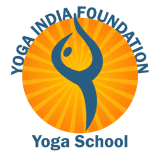
Are you looking for how to reduce neck pain? Neck pain can be a real nuisance, disrupting your daily routine and affecting your overall well-being. If you’re tired of constantly battling neck discomfort, you might be wondering how to find relief. Fortunately, there’s a natural and effective solution – yoga for neck pain. In this guide, we’ll explore what neck pain is, why it occurs, and how yoga for neck pain can be your ally in alleviating and preventing discomfort.
What is Neck Pain and Why does it Occur?
Neck pain is a common discomfort experienced by many, often resulting from factors like poor posture, prolonged desk work, or muscle strain. The neck is a complex structure, comprising vertebrae, discs, muscles, and ligaments. When any of these components face stress or strain, it can lead to discomfort and pain. Identifying the root cause of neck pain is crucial for effective management and prevention.
What is Yoga for Neck Pain?
Yoga for neck pain involves a mindful approach to alleviate discomfort through targeted poses and movements. These yoga practices focus on improving flexibility, strengthening supporting muscles, and promoting relaxation. By incorporating yoga into your routine, you engage in a holistic approach to address both the physical and mental aspects of neck pain. If you are looking for how to reduce neck pain, please continue reading.
Which Yoga Techniques are The Best to Reduce Neck Pain?
Certain yoga techniques specifically target neck pain, offering relief through gentle stretches and movements. Especially one area of Yoga should be focused when you are looking for how to reduce neck pain: Pawanmuktasana. Pawanmuktasana means Energy-Releasing Posture and this is an integral part of yoga asana (postures). The Pawanmuktasana techniques easily reduce stiffness, tension and pain. Pawanmuktasana works on improving posture and overall flexibility and energy flow. Here are some practical examples:
Neck Movements:
- Sanskrit Name: Griva Sanchalana
- Instructions: Sit comfortably with a straight spine. Inhale, and as you exhale, drop your chin to your chest. Inhale and slowly lift your chin toward the ceiling. Repeat this gentle up-and-down movement several times.
Neck Tilt:
- Sanskrit Name: Griva Tilak
- Instructions: Sit with your spine erect. Inhale, and as you exhale, tilt your head to the right, bringing your ear toward the shoulder. Inhale and return to the center. Exhale and tilt your head to the left. Repeat this side-to-side movement, keeping it slow and controlled.
Neck Rotation:
- Sanskrit Name: Griva Matrika Sanchalana
- Instructions: Sit in a comfortable position. Inhale, and as you exhale, slowly rotate your head to the right. Inhale as you return to the center. Exhale and rotate your head to the left. Repeat this rotation, ensuring a smooth and gentle movement.
Neck Stretch:
- Sanskrit Name: Griva Sakti Vikasaka
- Instructions: Sit or stand with an upright posture. Extend your right arm alongside your body. Inhale and as you exhale, tilt your head to the left, bringing your left ear toward the left shoulder. Hold the stretch for a few breaths. Inhale and return to the center. Switch sides and repeat.
Neck Massage:
- Sanskrit Name: Griva Mali Kriya
- Instructions: Sit comfortably. Using your fingertips, gently massage the neck in circular motions. Focus on areas that feel tense or tight. This self-massage technique can help release tension in the neck muscles.
Shoulder Shrugs:
- Sanskrit Name: Kandhola Sanchalana
- Instructions: Inhale as you lift your shoulders toward your ears. Exhale and release them down. Repeat these gentle shoulder shrugs to release tension in the neck and shoulders.
What are the Benefits of Yoga for Neck Pain?
The benefits of yoga for neck pain extend beyond mere pain relief.
A regular yoga for neck pain practice can enhance overall posture, reduce stress levels, and promote better body awareness.
Yoga can offer various benefits for neck pain, impacting both the nervous system and overall well-being. Pawanmuktasana, the previously mentioned series of gentle movements and stretches, provides multifaceted benefits if you are looking for how to reduce neck pain. Through its emphasis on controlled and rhythmic motions, Pawanmuktasana offers relief by releasing tension in the neck muscles, gradually reducing stiffness and discomfort.
This yoga practice extends its advantages to the nervous system, inducing a soothing effect through gentle compression and release in the spine. As a result, it contributes to a sense of relaxation and calmness. Additionally, Pawanmuktasana supports improved energy levels by enhancing blood circulation, ensuring a more efficient flow of oxygen and nutrients to the body and brain. This increased blood flow promotes vitality and heightened energy.
Furthermore, the calming impact on the nervous system facilitates stress reduction, potentially leading to better sleep quality. Regular practice of Pawanmuktasana fosters a relaxed mind and body, contributing to more restful sleep patterns over time. Consistency in incorporating yoga for neck pain into your routine is pivotal for experiencing lasting benefits.
How to Prevent Neck Pain
Preventing neck pain involves adopting healthy habits such as maintaining proper posture, staying active, yoga for neck pain and managing stress. Regular exercise, stretching, and mindfulness practices are essential components of a preventive strategy. Child’s Pose, Cat-Cow Stretch, and the main Pawanmuktasana techniques as mentioned above are effective poses and exercises that release tension in the neck and shoulders AND prevent pain. Integrating these techniques into your routine can contribute significantly to reducing and preventing neck pain.
What to do when you have Shoulder Pain
Yoga can be a beneficial practice for reducing shoulder pain, too, promoting mobility, and addressing issues caused by poor lifestyle habits. Here’s a specific example of Pawanmuktasana, yoga for shoulder pain.
Pawanmuktasana Examples for Shoulder Pain – Yoga for Shoulder Pain
Gentle Micro Exercises – Shoulder Rotations:
- Sit or stand comfortably: Maintain an upright posture.
- Shoulder Rolls: Lift your shoulders up, back, and down in a circular motion.
- Forward and Backward: Move your shoulders forward and backward.
- Clockwise and Counterclockwise: Rotate your shoulders in both directions.
Regular movement, stretching, and mindfulness can contribute to reducing shoulder pain and improving overall well-being
Importance of a Regular Yoga Practice
Consistency is the cornerstone of reaping the full benefits of yoga for neck pain. A regular yoga for neck pain practice not only addresses immediate discomfort but also contributes to long-term well-being. The cumulative effects of increased flexibility, strengthened muscles, and enhanced body awareness make a regular yoga routine invaluable in managing and preventing neck pain.
How to Learn Yoga Properly
Embarking on a journey to learn yoga properly with all its techniques and benefits, involves choosing a comprehensive and authentic yoga program and teacher. Yoga India Foundation´s foundational 200 hour yoga teacher training in India offers an immersive experience, led by highly qualified instructors with profound expertise in yoga and Ayurveda. This yoga teacher training program not only equips you with the knowledge to practice safely but also provides insights into the philosophy and principles of yoga, ensuring a well-rounded education in how to gain optimum health with yoga. Enrolling in Yoga India Foundation´s 200-hour yoga teacher training in India offers a transformative learning experience in the heart of Rishikesh, the world capital of yoga.
Receive our Free Pawanmuktasa Guide Book by signing up for our newsletter here
